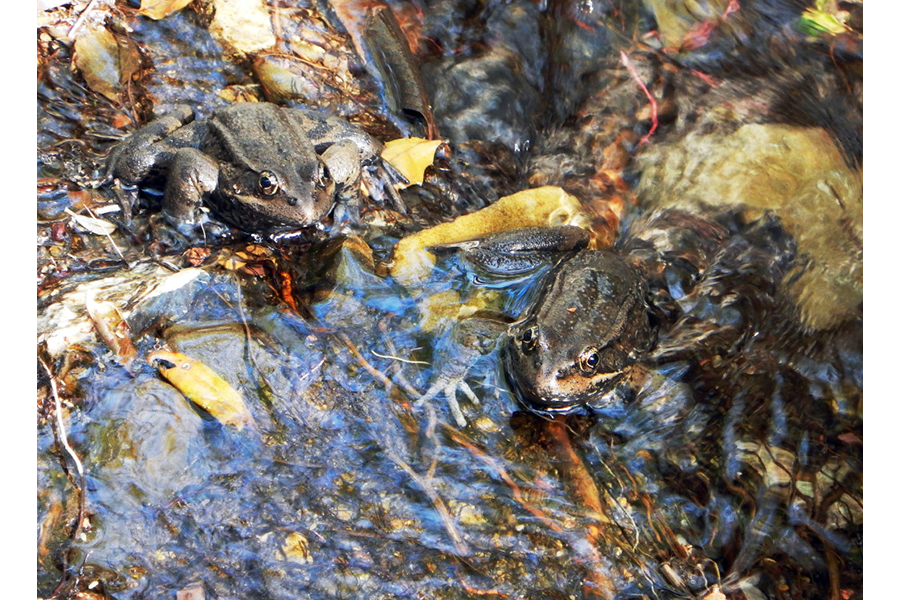Rare red-legged frog could be making a comeback
Loading...
In 2014, biologists moved 350 California red-legged frog eggs to a stream in the Santa Monica Mountains where they hadn’t been seen in decades.
One member of the team, wildlife ecologist Katy Delaney, said they were “cautiously optimistic” about their effort to bring the once-widespread frog back to the mountains. “I’d love it if in a few years we had red-legged frogs galore,” she told the Los Angeles Times in late 2013.
Now, that goal is becoming reality. On March 14, researchers found nine red-legged frog egg masses – probably laid by the frogs who were re-introduced as eggs four years ago. The find is an early sign that the restoration effort is working, and that the Santa Monica Mountains ecosystem is headed to greater health.
"I was literally crying when the stream team showed me the photos of egg masses," Dr. Delaney, who works with the Santa Monica Mountains National Recreation Area, told the Associated Press. "The years of work we've put in is showing amazing progress. There's still plenty of work to be done, but this is a major moment for the project."
It’s not just amphibian lovers who have a stake in the project’s success. Each year, tourism to the Santa Monica Mountains National Recreation Area generates $26 million in economic impact for Southern California – and that’s not even counting the “ecosystem services,” like water filtration and flood control, that the area’s plants, animals, and soil provide.
Protecting delicate environments like these involves maintaining a proper balance of predators, prey, and other species. As biologist Anthony Barnosky explained to The Christian Science Monitor’s Eva Botkin-Kowacki recently, "Maybe you want to build that ecosystem into something that is functioning more or less naturally so that you don't have to constantly manage it."
"If you're thinking about building an ecosystem, it's kind of like thinking about building a house," he said. "You need a certain number of carpenters, a certain number of plumbers, a certain number of electricians."
Continuing with the house metaphor, frogs serve as an ecosystem’s smoke detectors and carbon-monoxide alarms. Exposed to both air and water, they’re considered important gauges of area’s overall health.
And in the Santa Monica Mountains, the red-legged frog has mostly shown a downward trend. Once prominent enough to figure in an 1865 short story by Mark Twain, they were gradually winnowed down by invasive species, habitat destruction, and pesticide use. By 1999, Los Angeles County only had three known populations remaining.
By the early 2010s, the frog’s absence hadn’t yet made itself felt in the rest of the NPS-administered recreation area. Joseph Serna reported for the Los Angeles Times in 2013 that “The red-legged frog is the only species missing from the park’s ecosystem.” The researchers decided that transplanting eggs from the nearby Simi Hills population was a step worth taking.
Those frogs’ hatching, maturing, and, now, breeding is one of a few glimmers of hope in the global amphibian picture. In recent months, scientists have re-discovered a long-lost frog species in Zimbabwe and found several “miniature” frog species in India.
Both in those places and in California, further conservation work remains. The researchers deliberately introduced the frogs to a stream free of invasive catfish, where they stood the best chance of surviving. But Delany sees this new generation as progress worth preserving.
“I’m really happy for every single milestone, but this is sort of the one we’ve been looking for.”








